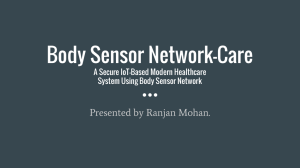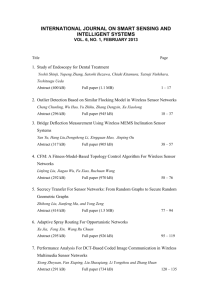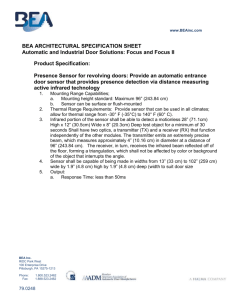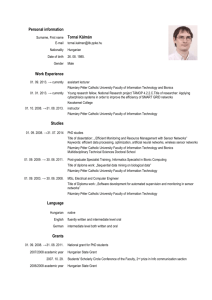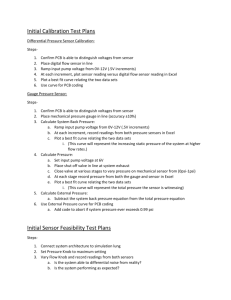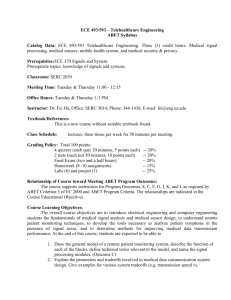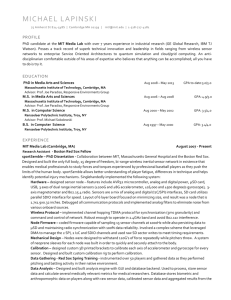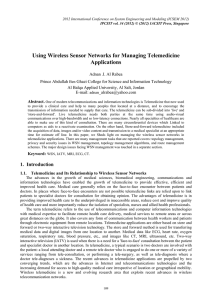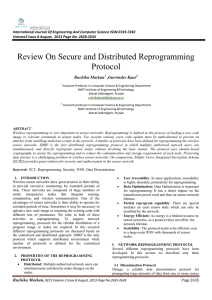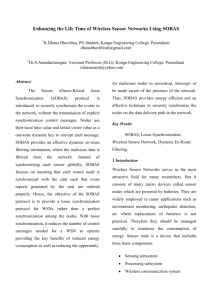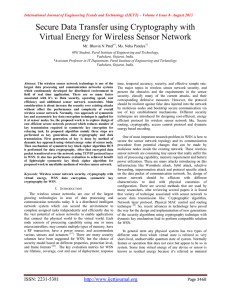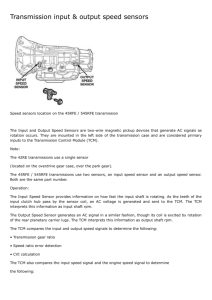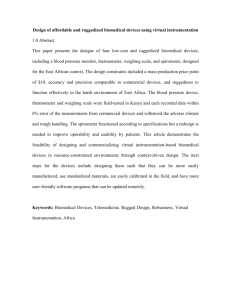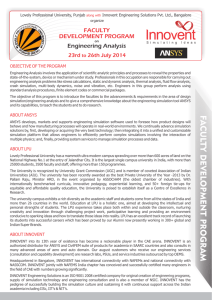File - Eric Chavez MD MMI
advertisement
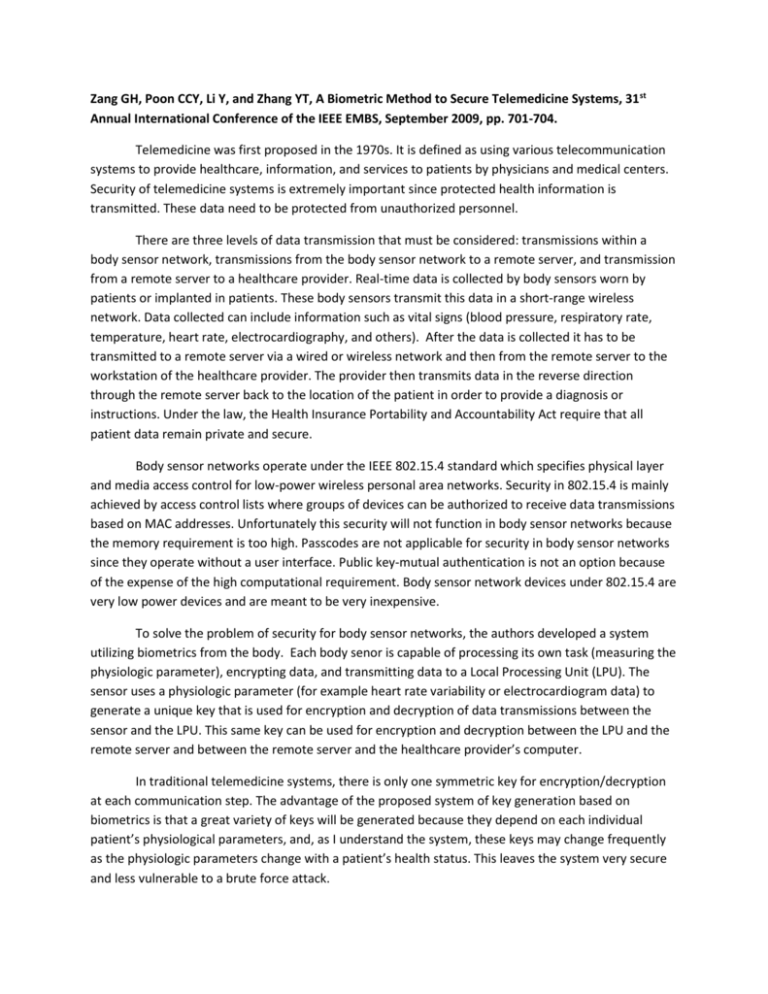
Zang GH, Poon CCY, Li Y, and Zhang YT, A Biometric Method to Secure Telemedicine Systems, 31st Annual International Conference of the IEEE EMBS, September 2009, pp. 701-704. Telemedicine was first proposed in the 1970s. It is defined as using various telecommunication systems to provide healthcare, information, and services to patients by physicians and medical centers. Security of telemedicine systems is extremely important since protected health information is transmitted. These data need to be protected from unauthorized personnel. There are three levels of data transmission that must be considered: transmissions within a body sensor network, transmissions from the body sensor network to a remote server, and transmission from a remote server to a healthcare provider. Real-time data is collected by body sensors worn by patients or implanted in patients. These body sensors transmit this data in a short-range wireless network. Data collected can include information such as vital signs (blood pressure, respiratory rate, temperature, heart rate, electrocardiography, and others). After the data is collected it has to be transmitted to a remote server via a wired or wireless network and then from the remote server to the workstation of the healthcare provider. The provider then transmits data in the reverse direction through the remote server back to the location of the patient in order to provide a diagnosis or instructions. Under the law, the Health Insurance Portability and Accountability Act require that all patient data remain private and secure. Body sensor networks operate under the IEEE 802.15.4 standard which specifies physical layer and media access control for low-power wireless personal area networks. Security in 802.15.4 is mainly achieved by access control lists where groups of devices can be authorized to receive data transmissions based on MAC addresses. Unfortunately this security will not function in body sensor networks because the memory requirement is too high. Passcodes are not applicable for security in body sensor networks since they operate without a user interface. Public key-mutual authentication is not an option because of the expense of the high computational requirement. Body sensor network devices under 802.15.4 are very low power devices and are meant to be very inexpensive. To solve the problem of security for body sensor networks, the authors developed a system utilizing biometrics from the body. Each body senor is capable of processing its own task (measuring the physiologic parameter), encrypting data, and transmitting data to a Local Processing Unit (LPU). The sensor uses a physiologic parameter (for example heart rate variability or electrocardiogram data) to generate a unique key that is used for encryption and decryption of data transmissions between the sensor and the LPU. This same key can be used for encryption and decryption between the LPU and the remote server and between the remote server and the healthcare provider’s computer. In traditional telemedicine systems, there is only one symmetric key for encryption/decryption at each communication step. The advantage of the proposed system of key generation based on biometrics is that a great variety of keys will be generated because they depend on each individual patient’s physiological parameters, and, as I understand the system, these keys may change frequently as the physiologic parameters change with a patient’s health status. This leaves the system very secure and less vulnerable to a brute force attack.






